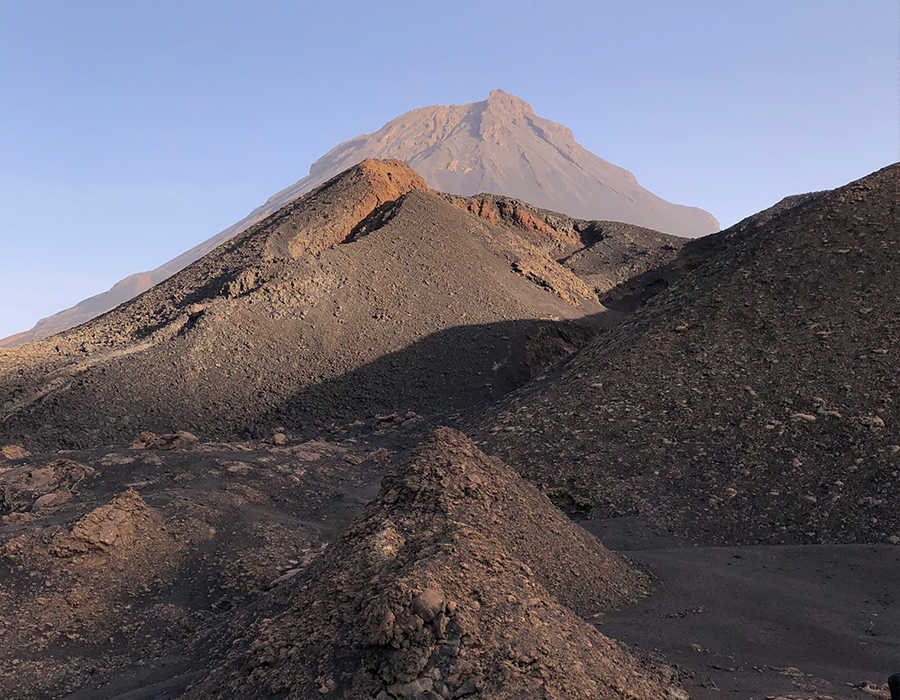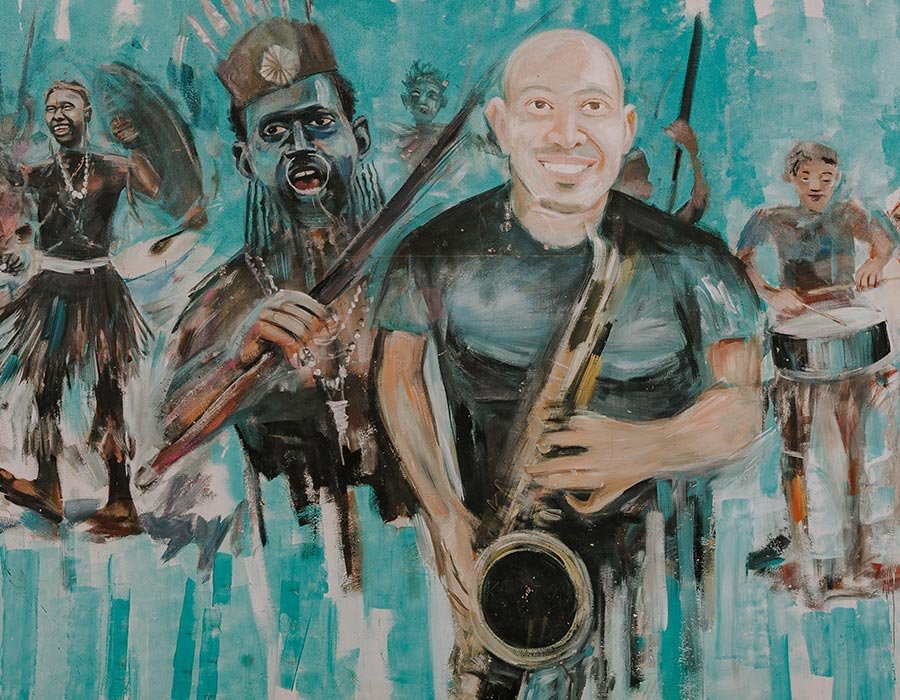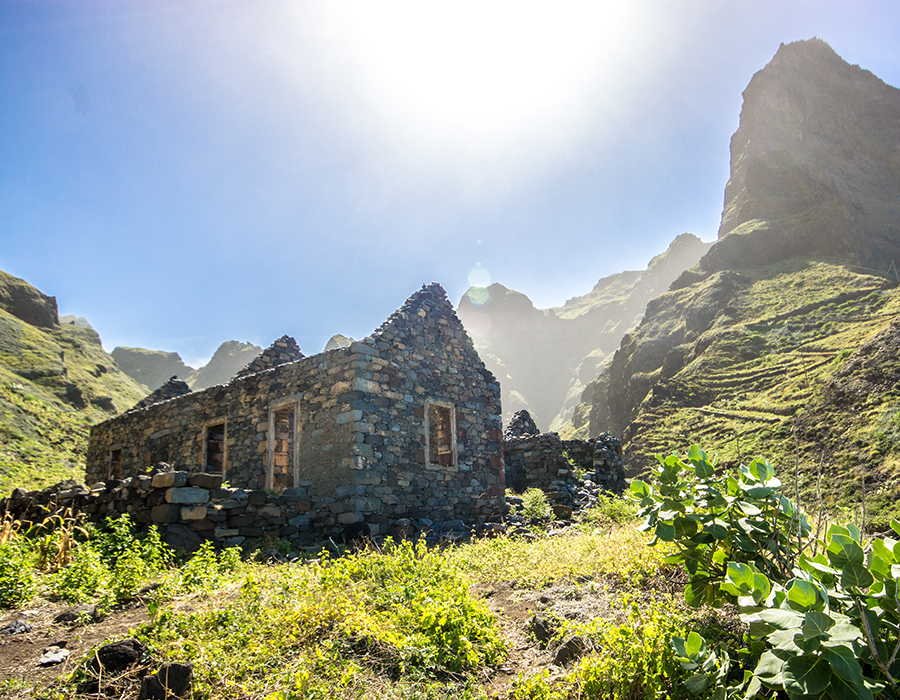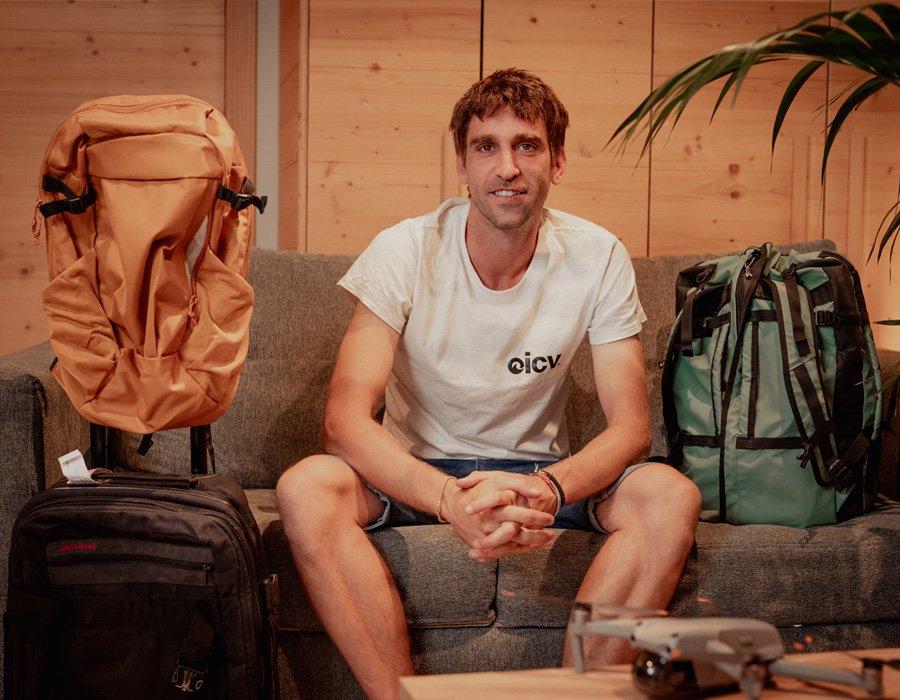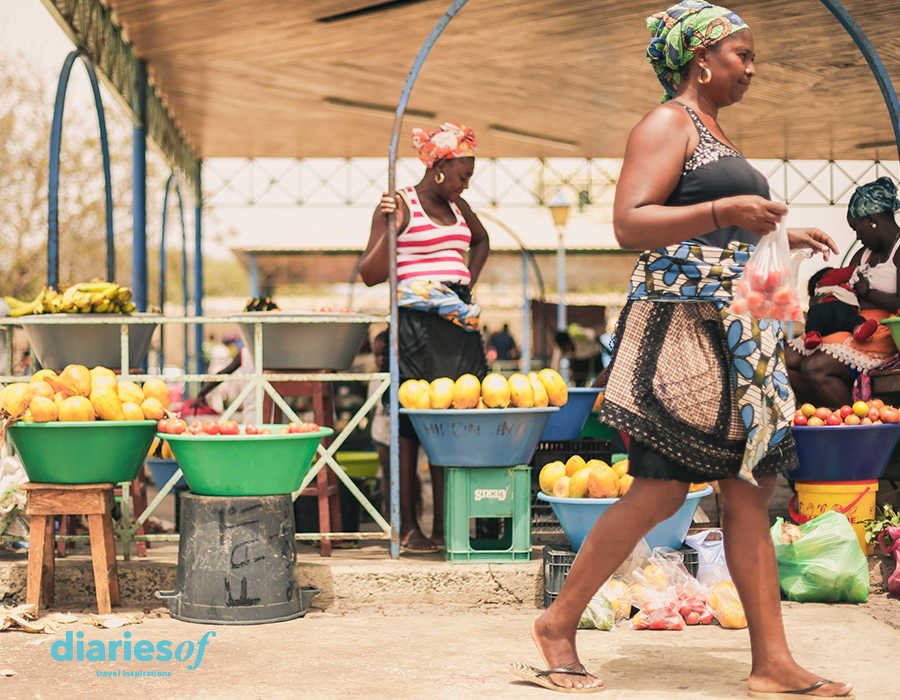In Fogo and around the world, when a volcano erupts it never asks anyone for permission.
It is a kind of unwelcome visitor that invades the privacy of homes, forcing people to leave behind all their belongings and memories.
Here is a little story that our companions from diariesof experienced on the island of Fogo. They are a couple of travelers who always immerse themselves into the local communities wherever they travel and tell us incredible stories from around the world. You can access their content through their website. We hope you like our adaptation:
Emotion to the surface
From the car window, we realized that we had arrived at Fogo National Park, where we were able to witness for the first time the imposing Pico and to see the lava from the 1951 and 1995 eruptions. It was a totally infertile and hostile landscape. It was just as we imagined it, but once you experience it firsthand the feeling is impressive and emotions run high.
Amid a scene full of dark ash sands everywhere, we spotted a fertile patch of land created by volcanic processes and wind erosion. Volcanic wine? Well, it looks like it… We continue our route towards a more aggressive landscape. Absolute silence, only the wind breaks this desolate postcard. Our eyes see a perfectly defined lava flow of such beauty and aesthetics that generates movement in this snapshot. Pure black rock with a curious iridescent blue reflection that forms a sea of lava waves, some of them still smoking. The scope of this devastating tongue was immense.
Cha, the missing village buried by lava
“This is it: Cha das Caldeiras buried up to 90 meters deep”, pronounced our impassive driver as he turned his car heading back to Sao Filipe. We were so perplexed that we didn’t even react to say goodbye as the car drove away. Cha was no more, it disappeared in 2014. We were not prepared to witness that scene. We could still see multiple roofs of the houses or the roof of the church trying to peek through the black sea of lava. Today, some of its inhabitants are trying to build their houses on top of the buried ones.
Immersed in that situation, it took us a few minutes to process all that and absorb the pure reality. Cha das Caldeiras had sunk into the magma.

Buried houses in Cha

Detail of lava formations
We started walking until we saw one of the houses our driver mentioned; it was Bébé’s house. She runs a small convenience store where she sells a few products such as water, wine, cookies and tuna. She occasionally bakes bread and when we asked if we could eat, she made us a delicious tortilla. Bébé used to have a famous restaurant in Cha. After losing everything during the eruption, she rebuilt her house and restaurant a few meters beyond the lava without any help from the government. We were puzzled by her courage, and also by her light eyes and blonde hair.
After a bit of wandering, when we asked about the volcanic wine, we noticed that its label read Bébé Montrond – she was a descendant of the French Duke of Montrond, who in 1872 introduced vineyards to the island and was responsible for the presence of blue eyes and blond hair on the island.
"In the night, a rumbling sound followed by an earth tremor suddenly woke us up."
Night came, and she very kindly allowed us to pitch our tent on her plot. Over the course of a few nights we were neighbors on the young lava. Without electricity, the sky was one of the most starry we had seen so far. At night, a rumbling sound followed by an earth tremor woke us suddenly. We thought the worst, being on top of active volcanic earth… but there was no reason to panic. The next day we were told that it was simply the lava cracking due to the pressures of the lava.
Cape Verde, a perfect vacation destination
One morning at 6 o’clock we were ready to start the ascent of Pico Grande. We would be accompanied by Valdir, Bébé’s brother, and although it is not a very technical route, it is still a 1200 meter ascent to 2829 meters. We appreciated the presence of a local guide as it is difficult to follow the route because the path is very diffuse.
Walking on the young lava ground is a supernatural experience where one can feel the lava cracking at one’s feet. At times, we can also see small plumes of smoke still escaping. The earth is alive.
The climb offered us incredible views. As we gained altitude we saw that the large crater at Fogo was speckled with small volcanic cones of different sizes and colors. Along the way, we encountered hikers of different ages taking their time contemplating the magnificent views. Finally, when we reached the top of the peak we appreciated the panoramic views over the 9 kilometers wide caldera, whose walls of more than 1000 meters high were below our feet; a feeling of maximum immensity. Below the crater there was a sea of clouds, and this unusual landscape created a unique atmosphere, leaving any hiker stunned once they reached the summit.

Immensity of the Fogo caldera
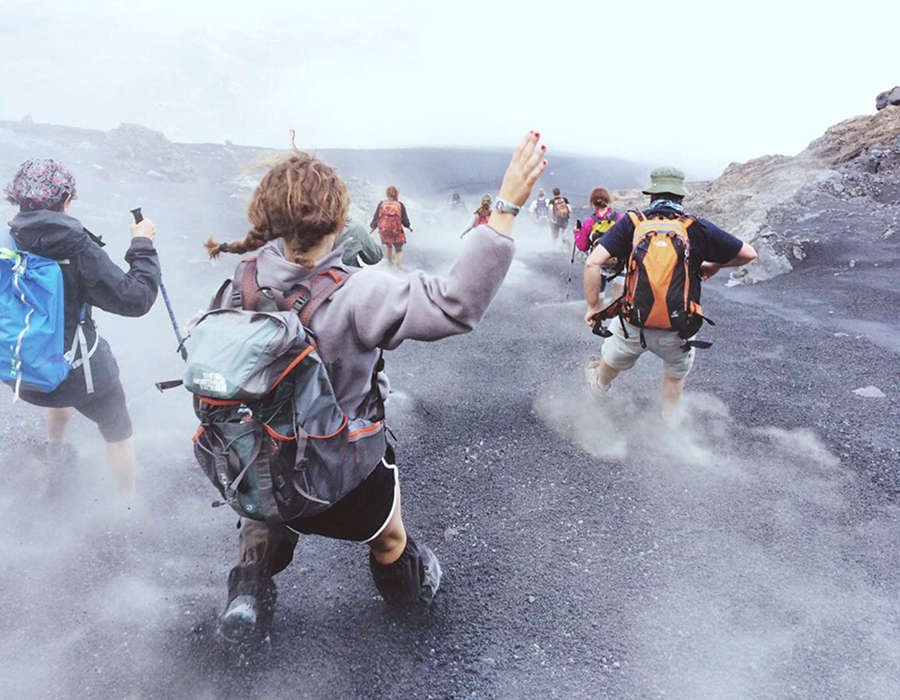
Descent through the ashes
We thought Valdir was joking when he told us that the descent would be an express race, but that’s exactly what it turned out to be. A full speed descent down the volcanic slopes with our feet covered in ash and kicking up a trail as if we were skiers in some kind of black snow.
When we reached the base it started to get dark, but we still had to see the roofs of the houses peeking through the sea of lava. Suddenly we had a privileged view of an area that the lava did not cover and we realized how fertile the land was. There were a variety of trees and vines whose green contrasted sharply with the rest of the landscape. Figs, peaches, apples and pomegranates and others that we were not able to recognize; all dodged the tongue of lava and remained intact, reminding the inhabitants of the fertility of this land.
And this is what life is all about: nature’s contrasts. These images of green shoots are some of the reasons why the people of Fogo do not want to leave the crater, despite having an active volcano as a neighbor.



